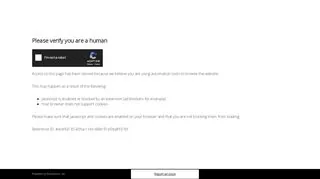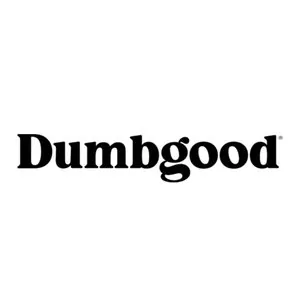Difference Between Cost of Capital and Discount Rate
To determine if a project or investment is profitable, the cost of capital and discount rate must be considered together. The cost of capital is the minimum return required to make an investment worthwhile. The discount rate is used to discount future cash flows. This is primarily due to the type of capital used to fund the investment. The company's owners and lenders don't extend financing... See moreDiscount RateA company should only proceed with a project if its expected revenues exceed its costs. In other words, it must be profitable. The discount rat... See moreFrom investopedia.comContentCost of Capital vs. Discount Rate: An OverviewCost of CapitalDiscount RateSee all sections
Cost of Capital vs. Discount Rate: What's the Difference?
Cost of Capital vs Discount RateWhat Is Cost of Capital?What Is Discount Rate?Main Differences Between Cost of Capital and Discount RateConclusionReferencesThe main difference between the cost of capital and discount rate is that cost of capital is the required returnneeded to make any new project successful, whereas the discount rate is the interest rate used to calculate the present value of cash flows that may be acquired by a project in future. It is important to consider the cost of capital when making a decision.
Difference Between Cost of Capital and Discount Rate
The cost of capital refers to the return required for an undertaking or venture in order to make it profitable. The discount rate refers to the loan fee or interest rate that is used to determine the...
Difference between Cost Capital and Discount Rate.
Cost of Capital is the cost a company pays for the capital they use, divided between equity and debt. It is usually calculated using the WACC (Weighted average cost of capital).
Cost of Capital vs. Discount Rate: What’s the Difference?
Cost of Capital is the cost a company pays for the capital they use, divided between equity and debt. It is usually calculated using the WACC (Weighted average cost of capital). ...
Are the costs of capital and discount rates the same thing?
6.2 Discount Rate vs Cost Of Capital 7 Final Thoughts: The discount rate. Money loses value over time. ... People often confuse the discount rate with the interest rate.
What is a Discount Rate? Why Does It Matter? - Fervent
Researches over the period 1985-2000 suggest that market discount rates derived from actual market sales average 22-25% before Federal Income
Discount Rates From Market Sales vs. Cost-of-Capital: From …
The cost of capital is simply the minimum rate required to justify the cost for a new venture. The discount rate is the amount that must meet or exceed the cost capital. As shared...
What is a Discount Rate and How to Calculate it? | Eqvista
The required rate of return on routinely invested capital and 2) the required return to intangible assets investments, p' (also known as the cost or discount rate for a...
I. The Cost of Capital, Discount Rate, and Required Rate of …
Capital Asset Pricing Model (CAPM-WACC Weighted Average Capital Cost-VS Discount Rate History FAQ. What is a Discount Rate? The discount rate is the opportunity cost of investment.
VS Discount Rate: Cost of Equity, WACC, and more - Versus …
Now we have all the information needed to calculate our company’s discount rate. This is equal to the sum total capital source costs multiplied with the capital structure weight. ...
Discount Rate: Formula and Calculator (Step-by-Step) - Wall Street …
The cost of capital is the return required to make a capital project such as building a factory worthwhile. The cost of debt and the interest that goes with it are included in the cost of capital.
Cost of Capital: What It Is, Why It Matters, Formula, and Example
A bond with a coupon rate of 5% has the same capital cost as a loan with a rate of 5%. Calculating the cost of equity, or stock, can be a bit more difficult.
Understanding Cost of Capital vs. Required Rate of Return
All three rates of return, including the opportunity cost of capital, hurdle and discounting rates, are the same. It is the rate of return that can be earned from next-best alternative investment opportunities with similar...
Opportunity Cost of Capital | Hurdle Rate | Discounting Rate | eFM
Corporate Finance; Business; What's the Difference Between Cost of Capital and Discount Rate?
Cost of Capital vs. Discount Rate: What's the Difference?
Business; Corporate Finance; Cost of Capital vs. Discount Rate: What's the Difference?
FAQs for Discount Rate Vs Cost Of Capital
What is a discount rate? How can you calculate it?
Formula for Discount Rates Discount = Marked Price - Selling Price. M.P (Marked price) is the real price of the product, without discount. S.P (Selling price) is the price customers pay for the product. A discount is a percentage off the market price.
What is the difference in WACC and capital cost?
What is the difference between Cost of Capital (Cost of Capital) and WACC? Cost of capital is the sum of cost of equity and cost of debt, while WACC is the weighted average cost of these costs as a percentage of equity and debt held in the firm. WACC and Cost of capital are used in key financial decisions such as merger and acquisition.
Can we compare Roa and capital cost?
ROA can be used as a way to compare the company’s weighted average costs of Capital (WACC). A company that has a Return on Assets greater than WACC means that it is creating value for its capital providers. If the company cannot earn a Return of Assets greater than WACC, it is destroying its value.
Is the cost of capital equal to the interest rate?
The cost of capital is the cost of financing business activity with equity or debt capital. The discount rate is an interest rate that is used to calculate the future value of cash flows in standard discounted cash flow analysis.



















